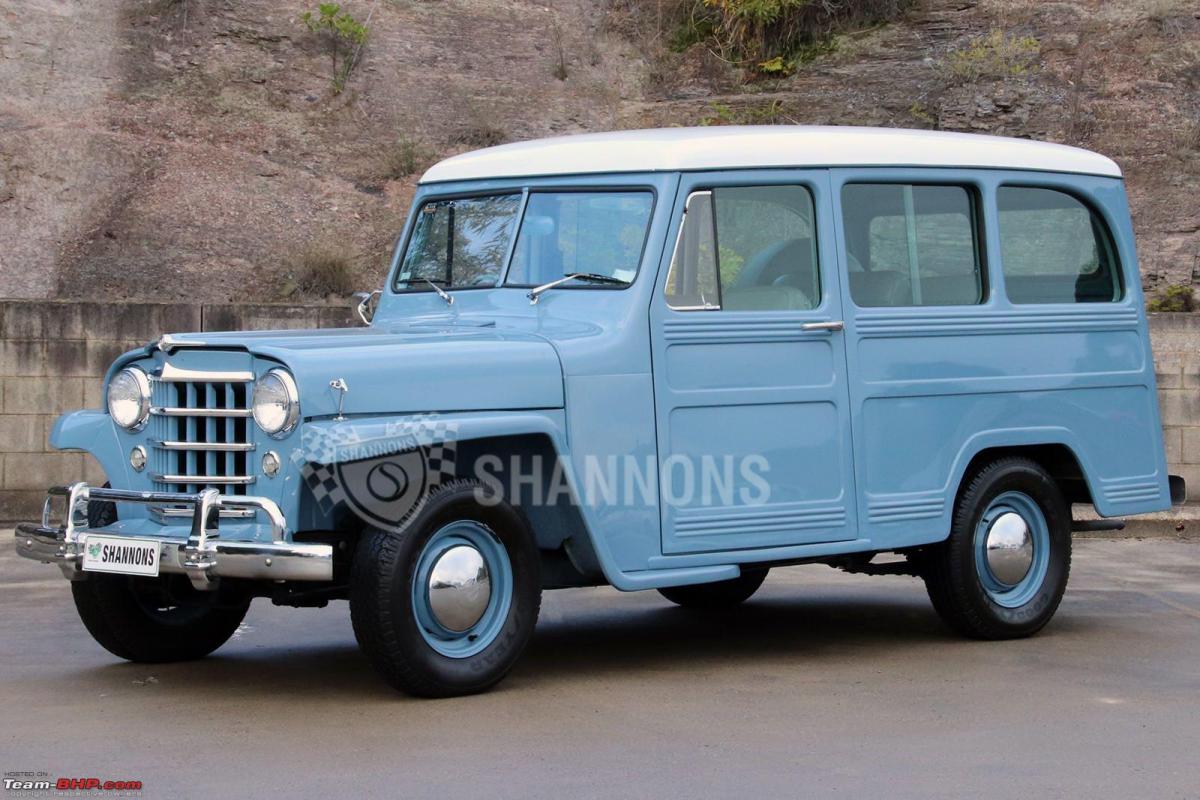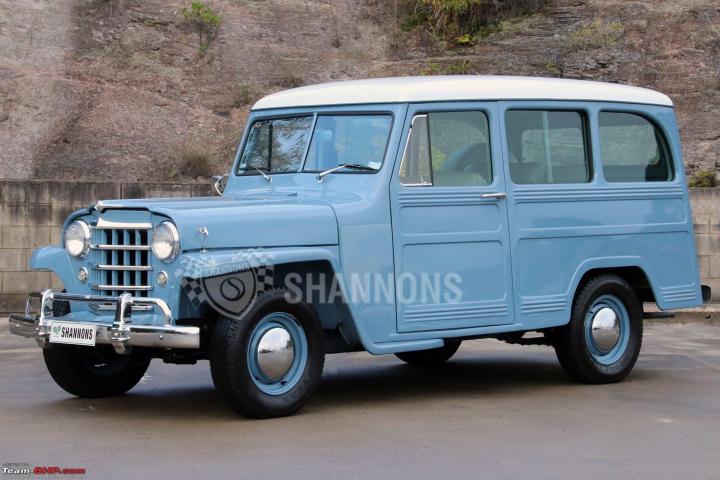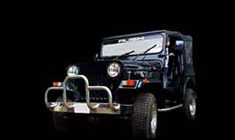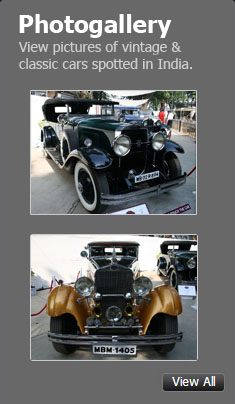News
India's transition from sedans to hatchbacks to sedans to crossovers
The journey of Indian car preferences since 1957 is described with maybe many misses. With hatchbacks, mini-sedans (both due to affordability) and mini-SUV's ruling the sales charts, some more shifts in buyer preferences could be discernible in the coming years and decades.
BHPian anjanc_2007 recently shared this with other enthusiasts.
The car scenario in India is being discussed on this thread starting from the restricted or rather banned imports era of 1957. The Tariff Commission was constituted by the Ministry of Commerce and Industry, Govt of India, in March/ May 1952 and chaired by Mr M.D. Bhat to look into imported automobile custom duties and to discourage imports. A phased manufacturing programme was stressed to encourage automobile makers indigenize their products in a phased manner. The Commission's report was submitted the government in May 1953 to be made effective from three years later.
An excerpt from the Tariff Commission report of 1953:-
The Commission has recommended that future demand should be concentrated on these five firms, and the assembly operations of those without a manufacturing programme should cease within a period of three years.
In order to concentrate demand on the five firms with a manufacturing programme and to provide for the progressive manufacture of the types of vehicles required by the country, the Commission has suggested a plan of manufacture of various types by different firms and a programme of progressive manufacture of these types. Briefly the plan is as follows:-
(a) Hindustan Motors, Ltd., will manufacture a light car, a big car and a medium truck.
(b) Premier Automobiles, Ltd., will manufacture a big car and a medium truck.
(c) Automobile Products of India, Ltd., will manufacture a light car and a medium truck.
(d) Standard Motor Products of India, Ltd., will manufacture a medium car only.
(e) Ashok Motors, Ltd., will concentrate on a heavy truck and a baby car, if a suitable scheme is put forward by them.
The Commission does not consider that any of the five manufacturers is likely to make jeep-type vehicles. It has recommended that, for the present, the requirements of Jeeps, both Civil and Military, should be met by the existing assemblers of jeep-type vehicles.
Please just peruse how biased the report was in favour of Hindustan Motors.
Back to the topic, Indian car buyer’s preferences had been earlier dictated by a Hobson's choice during the licence raj era that was effective since 1957. We had only three sedans from Hindustan Motors, Premier Automobiles and Standard Motors, with Mahindras offering their Willys/Jeep UV and Station Wagon. The Willys Station Wagon was a SUV and also fitted the definition of a hatch perfectly.



1951 Willys Station Wagon images courtesy Shannons Auctions
The liberal imports era commenced since the turn of the last millennium (20thcentury) through the 1950's. American made Station Wagons mostly had similar hatch configurations with the tailgates/ tail doors opening fully to allow access for loading goods. Americans used these for their weekend getaways and hence their market received such Station Wagons very well. These were sold in decent numbers in India too. The 1950’s were dominated by Chrysler Corporation badged Dodge, Plymouth and DeSoto station wagons here in India. During licence raj era, we had all the three car makers launching Station Wagons though these sold marginally. Though post-liberalisation, we saw many flops as far as station wagon sales were concerned viz. the Fiat Sienna Adventure, Opel Corsa Sail, Baleno Altura and the Indigo Marina to name some. Going by their fate, car makers of today are station wagon launch-phobic. The hatchbacks and SUV’s have now almost replaced station wagons in all sizes.
The three sedans offered by HM and Premier ruled our roads all through the late 1950's till the mid 1980's. Standard ceased manufacturing its Gazel (the last sedan model) by around 1976-77. HM and Premier faced headwinds, come entry of the tiny hatch from Maruti Udyog Ltd, the SS 80 in 1984 and later in 1986, the SB 308 apart from the Van/ Omni and Gypsy it offered. The SS 80, though does not fit the definition of a hatch as will be evident in the meaning below. Only its rear windscreen swung upwards denying full access to the main interior. Tata Nano will also fail to meet the hatchback segment requirements, going by the definition.
The hatch era had begun with the car sale figures to be soon cornered by the Maruti 800 (SS 80 and later SB 308). Sipani's Dolphin/Montana were also hatchbacks but the sales were insignificant. The early 1990's ushered in sedans from Maruti (1000/ Esteem) and soon after also from Daewoo, Ford, Opel (it was a larger hatchback though), Mercedes and Peugeot. During the turn of the millennium and during later years Honda, Toyota, Chevrolet, BMW and Audi, Renault (later Mahindra) joined with their launches of sedans and SUV’s/ MPV’s followed by others. Fiat tried to crack the hatch segment with its Uno and later with Palio, followed by Punto but these never really sold well. Fiat Sienna/ Linea and their Sienna Adventure were also non-starters. The Daewoo Matiz was well accepted but the company’s downfall sealed its fate.
Definition of a hatchback car:-
A hatchback is a car body configuration with a rear door that swings upward to provide access to the main interior of the car as a cargo area rather than just to a separated trunk. Hatchbacks may feature fold-down second-row seating, where the interior can be reconfigured to prioritize passenger or cargo volume.
Maruti continued to rule the hatch market with a slew of consecutive new launches starting mid-1993, with Zen followed by the Wagon-R , Alto/K-10, Ritz, Swift, A Star, new 800 and Celerio to crowd the B segment. Most of these were/are best sellers. The Esteem established Maruti’s foothold in the C segment. The Baleno sedan (old) was under-rated and a non-starter. Their SX-4 (now defunct) that came after the Baleno sedan and its replacement the Ciaz sold/ sell quite well. The Swift Dzire/ Tour was and is a best seller.
Hyundai came along in 1998 with its Santro followed by the i 10/ Grande, Eon, i 20/Asta and so on to also crowd the B-segment. Hyundai’s lower C segment offerings, Accent, Xcent, Aura have also been well received. They did well soon to emerge as India’s # 2 car maker. Its D segment launch, the Sonata failed to click though his car is among the Top 5 selling sedans in the US.
Tata Mobile, the pick-up launched by Tata (then TELCO) in 1989 was a springboard for their entry into the car segment. The Sierra and the Estate were launched soon after in the early 1990's. The Estate though a station wagon was also a large hatchback going by the definition. The Safari launch around 1996 showed their seriousness to stay in the car business. Tata Motors launched the Indica in 1999 and soon after the Indigo. These were discontinued after their model life was over. Their refreshed versions failed to click. Their Nano too never sold decently. Tata’s renaissance has come of age comprising SUV's, sedans and hatches launches during recent years that have made Tata the #2 or # 3 largest car maker (depends on their monthly sales) in India.
Overall since the post 1984 era, considering sales as the market barometer, hatchbacks have ruled in our markets. The lower C segment sedans have also dominated the scene post the Swift DZire launch, owing to affordability.
Thereafter, with the lower C-segment sedans and hatchbacks interchanging top places among themselves sales wise, the Hyundai Creta launch by mid-2015 was a game changer. It has ushered in a new dawn with the success of the mini-SUV's in a niche that was unexplored. The Ford EcoSport launch in mid-2013 though preceded the Creta launch. The EcoSport’s success showed auto makers that this segment is worth a try.
Mahindra was already into the MUV/SUV space achieving success by catering to its markets. They considered entering the mini SUV segment where the action was and filled voids since the past few years with their own launches. The KUV 100 flopped, while the TUV 300 has been kept afloat. The XUV 300 sells in decent numbers.
The mini- SUV's are getting wide attention and every manufacturer worth its salt is foraying into this segment. Indian, European and Far Eastern car makers have flooded the market with their new mini-SUV launches. Honda is also launching its Elevate, come early June 2023.
The upper C segment sedan sales are under stress owing to the preference of buyers for mini-SUV's as of now.
Even with EV's getting launched by many car makers, EV sales in mini SUV segment are likely to gain a foothold in the market. The hatch segment and possibly the lower C segment EV's will also be in demand owing to the price tags that suit a large number of buyers.
The journey of Indian car preferences since 1957 is described with maybe many misses. With hatchbacks, mini-sedans (both due to affordability) and mini-SUV's ruling the sales charts, some more shifts in buyer preferences could be discernible in the coming years and decades.
Here's what BHPian shancz had to say on the matter:
A very pleasant and fascinating read with morning tea
One thing is very clear is that the definition of "type" is very unclear, even today.
If the Willys Station Wagon was a hatchback and the SS80 wasn't then in today's world the S-Presso and Ignis are "SUV"s like the Creta and the Nexon. Not to forget that all of them are "hatchbacks"
The definition of the "hatchback" is sound but its our usage which tries to shoehorn it into a small family car frame which is at fault. Like we've done for "mileage" instead of average. But can't say the same for SUVs.
Read BHPian comments for more insights and information.




_1.jpg)





_1.jpg)








